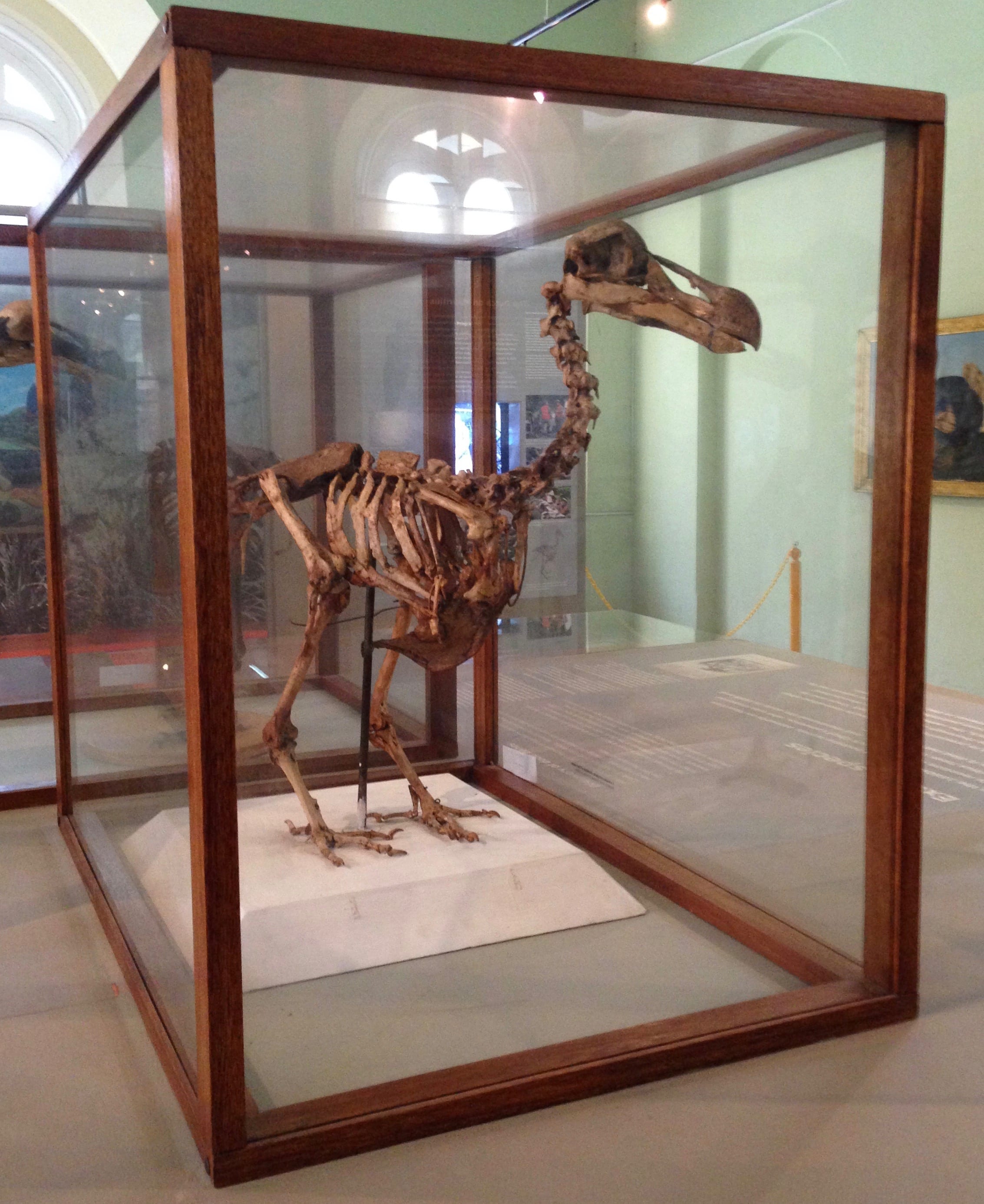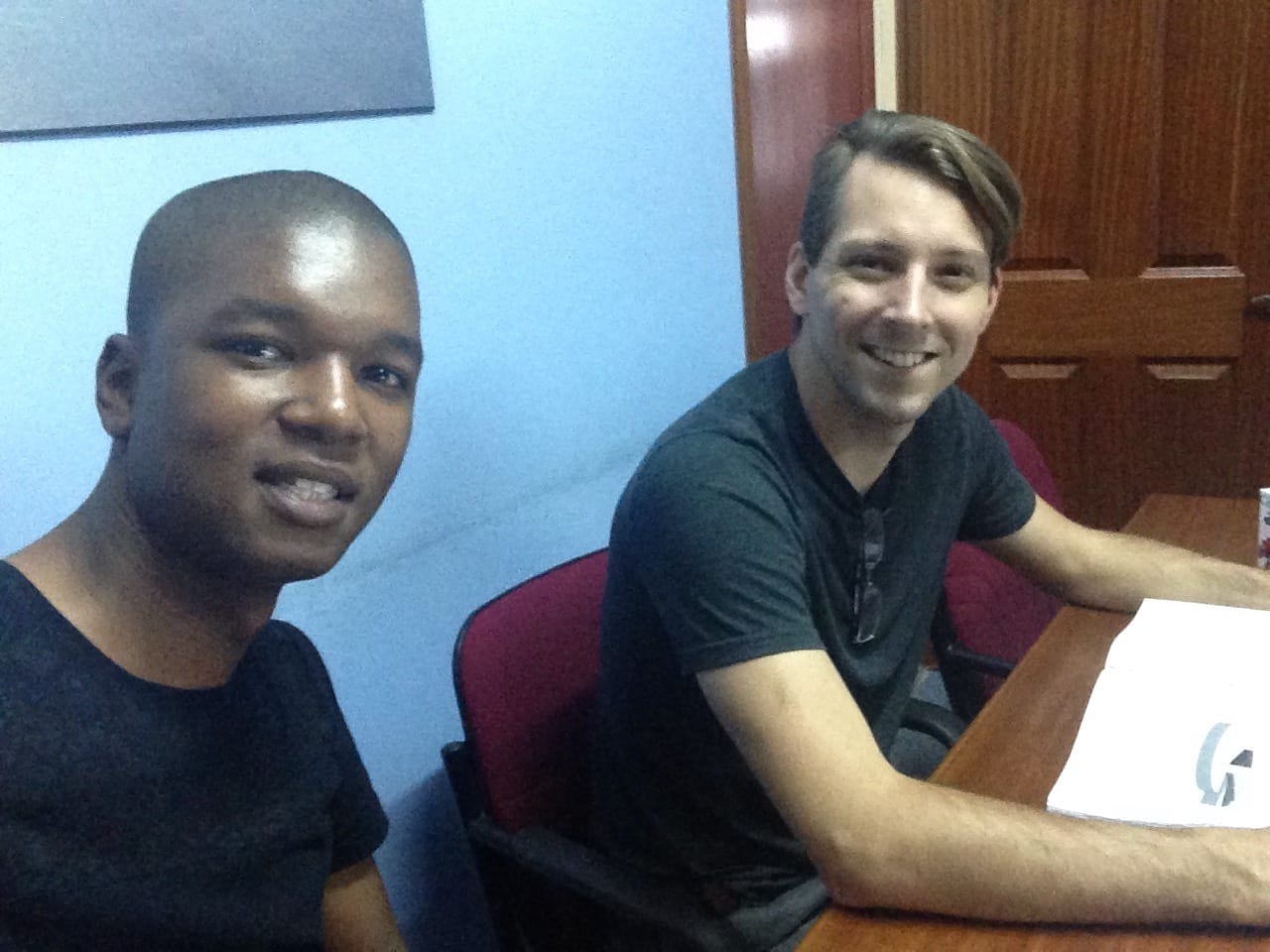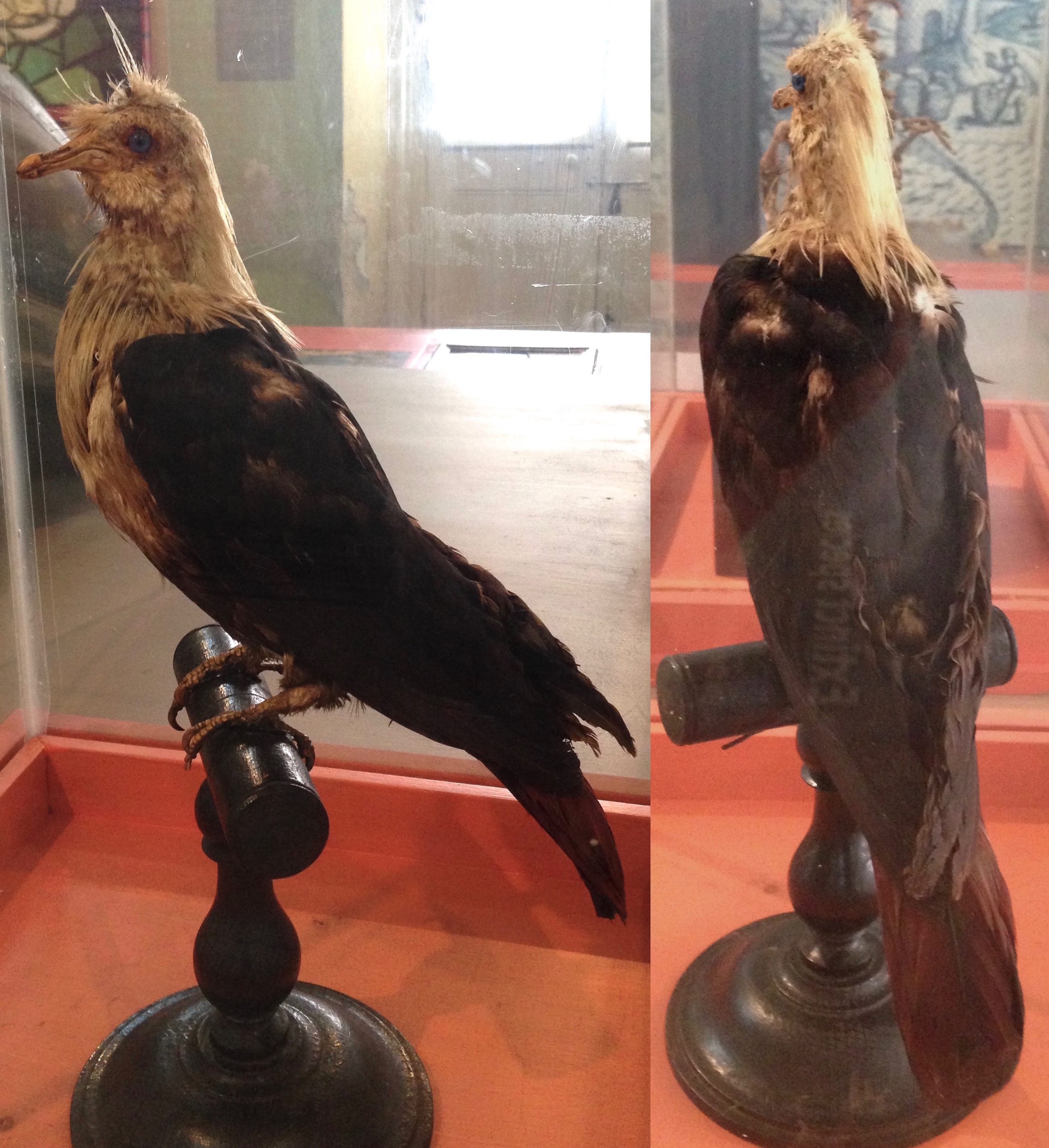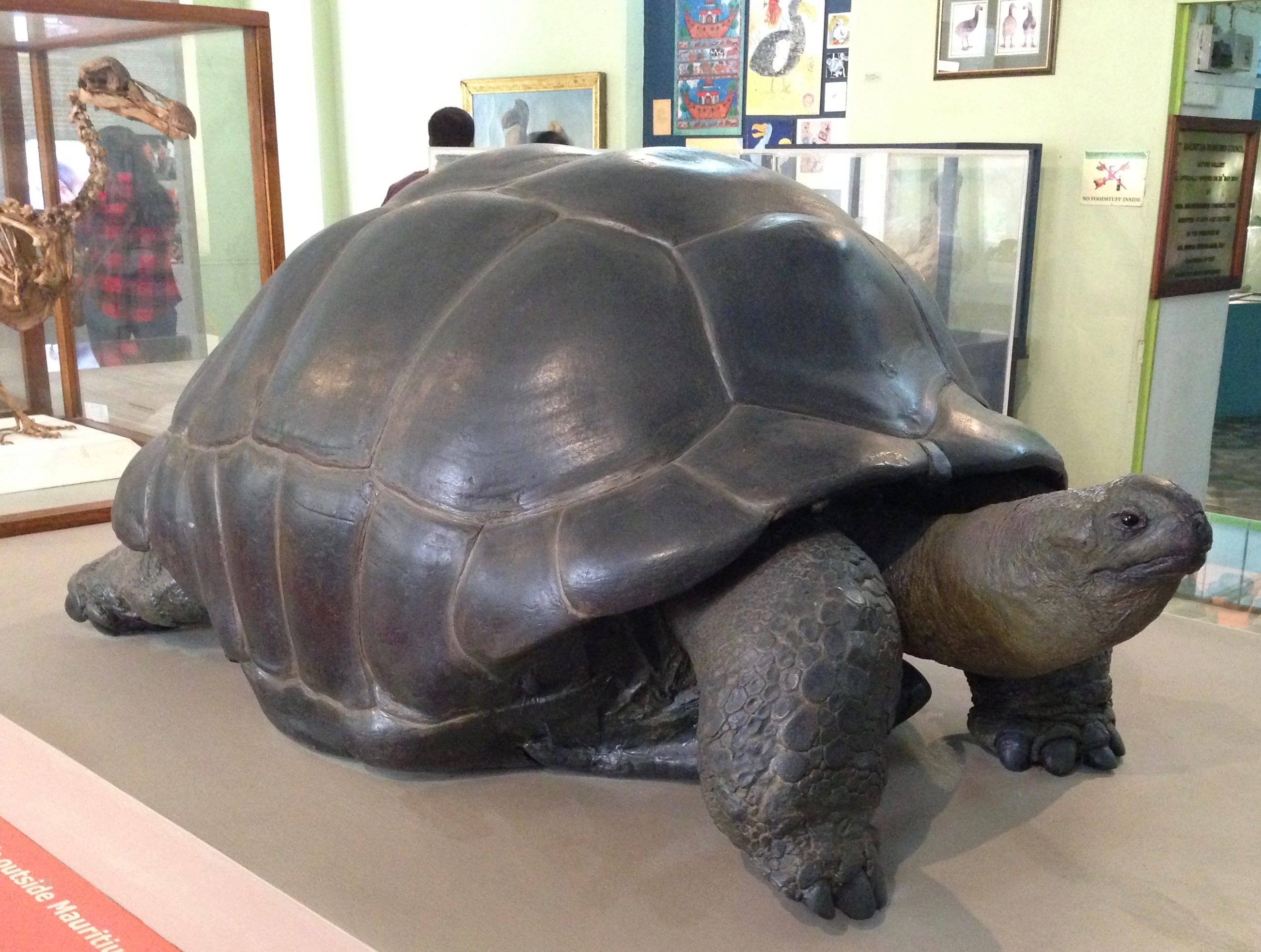By Ben J. Novak
“Gone the way of the Dodo” is the all-too-common sigh of remorse uttered when another species joins the growing list of recent extinctions.
The last Dodo bird died on the island of Mauritius (located about 1,200 miles off the southeast coast of Africa, in the Indian Ocean) over 300 years ago. It was driven to extinction in the late 1600’s after invasive species out-competed the bird for food and ate its young. The speed at which this pigeon was extirpated made the Dodo the modern icon of human-caused extinction. Less than 75 years after Dutch sailors colonized its island home, the Dodo was gone.

Skeleton of the extinct Dodo, endemic to Mauritius, on display at the Mauritius Natural History Museum, Port Louis, Mauritius.
At Revive & Restore, we receive a fair amount of emails from supporters expressing their hopes and interest in reviving the Dodo. And at first glance, beginning the Dodo de-extinction project seemed feasible; after all, the innovative reproductive technologies being used to revive the Passenger Pigeon (Revive & Restore’s flagship project) would also work for the Dodo. However, there is one big problem: a lack of Dodo DNA. Dodo DNA has proven extremely difficult to find.
But in January 2016, Beth Shapiro, an evolutionary biologist at the University of California, Santa Cruz, announced at the Plant and Animal Genomes XXIV conference that the whole genome of the extinct Dodo bird had been sequenced. This achievement made Dodo de-extinction possible.
Anyone that has watched my TEDx DeExtinction talk on the Passenger Pigeon knows that the Dodo bird is the bird that started my adolescent passion for de-extinction. This summer, I was able to start the dialogue that could one day lead to the revival of the Dodo, thanks to the help of another young conservationist and Mauritius citizen: Rick-Ernest Bonnier.

Rick-Ernest Bonnier and Ben J. Novak together researching Dodo fossil discoveries archived in the records of the Mauritius National Heritage Fund office.
Rick was touring American universities and conservation institutions on a prestigious Young African Leaders Initiative Mandela Washington Fellowship (a program begun by President Barack Obama in 2010) when he contacted me to discuss how Revive & Restore might work with the Mauritius community to use biotech for conservation, including for reviving the Dodo. We met and talked about various genetic rescue subjects over tea at the Long Now Foundation’s Interval Bar & Salon. When I told him the genome of the Dodo had been sequenced, Rick shifted from discussion to planning. He quickly submitted a travel grant proposal to the Mandela Washington Fellowship’s first “reverse exchange” program, which allows fellows to bring researchers (like me) from the United States to their countries to continue the projects hatched during their time in the U.S.
The proposal was granted, so in August 2016, I joined Rick in Mauritius to begin sharing the possibilities of next-generation genetic rescue with local conservationists.

Preserved specimen of the endemic Mauritius Blue Pigeon, collected in 1826, on display at the Mauritius Natural History Museum, Port Louis, Mauritius. One of only 3 specimens of this extinct species in the world.
My time in Mauritius was a true crash course in the nation’s proud conservation movement. Mauritius, while having lost the majority of its endemic species, is home to some of the most incredible recovery projects of endangered species anywhere in the world. For example, after having declined to only 12 individuals in 1968, the population of Rodriguez Fody, a small, red-faced songbird, has recovered to over 8,000. Mauritius has pioneered innovative hybrid programs of in situ and ex situ conservation recovery, exemplified by the Mauritius Kestrel recovery; the population has grown from a single female and 3 males in 1974 to over 400 individuals today. And it is one of the first countries to replace an extinct species, the endemic Mauritius Giant Tortoise, with a living ecological surrogate – the Aldabran Giant Tortoise. In essence, Mauritius has already done de-extinction the non-genetic way.

Artist’s reconstruction of an extinct Mauritian Giant Tortoise, based on fossils. On display at the Mauritius Natural History Museum, Port Louis, Mauritius. This species ecological role has been restored on a small satellite islands to Mauritius – Île aux Aigrettes and Round Island – using Aldabran and Madagascan tortoises.
The majority of endemic species are confined to small, intensively-managed reserves and predator-free satellite islands to protect them from the same threat that killed off the Dodo – invasive species. Before the arrival of humans, Mauritius was a land of birds and reptiles; the only mammals endemic to the island were a few species of bats. Invasive mammals are the main obstacle to the complete recovery for Mauritius ecosystems and the potential revival of its unique extinct species. Genetically engineering mammals so they breed themselves out of existence, using a sex-biasing gene drive could be a way to remove invasive mammals – which have been extremely difficult to control on Mauritius – without harming native wildlife. A similar technique has been pioneered in laboratory mice by Island Conservation’s genetic biocontrol initiative.
My work with Rick ended in what could be seen as a landmark historic meeting hosted by the U.S. embassy, in which Rick and I introduced genetic rescue opportunities to representatives of the Prime Minister’s Office, the National Parks and Conservation Service, the National Heritage Fund, Mauritius University, Mauritius Oceanographic Institute, the non-governmental organization ECO-SUD, Durrell Wildlife Trust, Hong Kong Shanghai Banking Corporation, and local Le Express newspaper. There was keen interest in both using synthetic biology approaches to confront invasive specie, and the role Mauritius could play in innovating strategies. Multiple ways in which Mauritius communities can advance genetic rescue were discussed. Many of the research opportunities are ideal for student projects – such as analyzing the genomics of bottlenecks and managing captive breeding with genetic insight.
But the prospect of Dodo de-extinction sparked the greatest discussion. It went far beyond the technology of Dodo de-extinction into the benefits of such a project for Mauritius’ conservation efforts and the significance of the project to the nation’s cultural values. Dodo de-extinction grabbed the headline of L’Express’s article reporting on the meeting (original French and English version).
It may be only a beginning, but the dialogue of genetic rescue has begun in Mauritius. Progress in Revive & Restore’s Passenger Pigeon de-extinction project and Island Conservation’s gene drive investigations, combined with strong partnerships, may allow the world to one day see the Dodo bird thrive again, while Mauritius continues to be a world leader in conservation innovation.



